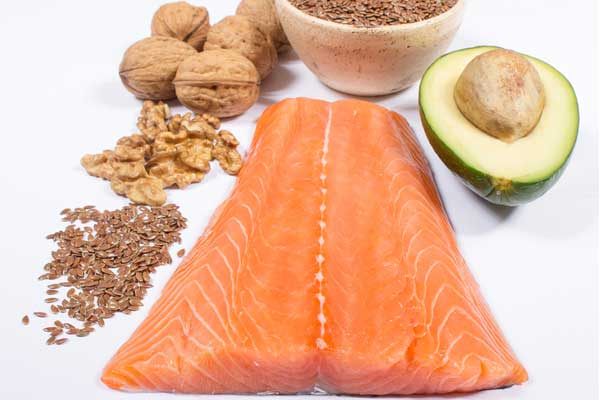Oh My, Omegas!

Have you wondered about Omega-3? Confused by omega-6? You have come to the right place!
These are fatty acids. Fatty acids are used for energy and other actions in the body. There are many types based on the length of the fatty acid chain. Interestingly, our bodies can make almost all of them.
Of the omega-3s we can make all except two: DHA and EPA. These are omega 3 fatty acids with very unique properties. Both are essential for human life. EPA helps protect your heart. DHA helps protect your brain health, and in fact much of the brain is made of cholesterol and DHA. Studies of people 65 – 98 showed lower stroke risk in those who ate fish several times a week. Omega-3s also lower inflammation or irritation in the body.
Omega-3 fatty acids are found in plants and in those animals that eat plants. Cows that eat pasture (“grass fed”) will obtain omega-3s from the pasture. Chickens that are free range will obtain omega-3s from the grasses, seeds, grubs and bugs that they eat. Fish in the oceans and rivers eat algae that contain omega-3s (wild caught fish). The DHA and EPA are stored in the fat of the animals. When you eat the animals you will obtain DHA and EPA. You also get DHA and EPA from fish oil and krill oil capsules.
We also find Omega-3s in other foods such as flaxseed and walnuts. These have a different form called ALA. In humans, only 2% is converted into EPA and DHA. For that reason, these are not considered good sources. The preferred source of Omega-3s for vegetarians is eggs from free-range chickens and dairy from grass fed animals. Vegans use algae pills to get enough DHA and EPA.
Omega-6 includes seeds such as corn, soybean, cottonseed, sesame, and other seeds. Other sources include the fat of grain fed beef, typically raised chicken or turkey and farmed fish. While healthy in small quantities, eating too much of those foods leads to more inflammation or irritation in the body.
We can make the other Omega fatty acids, such as Omega-9. Food sources of Omega-9 include olive oil.
Omega-3 and Omega-6 fight for absorption by the body. It is important that we balance our intake. An ideal ratio of Omega-3 to Omega-6 is about 1:2. The average American diet is roughly 1:15. We eat too many Omega-6s and we do not eat enough Omega-3. We can increase our intake of Omega-3 by consuming more of the foods that have it, such as fish. We can decrease our intake of Omega-6 by having those foods less often, and trimming the fat from those foods.

